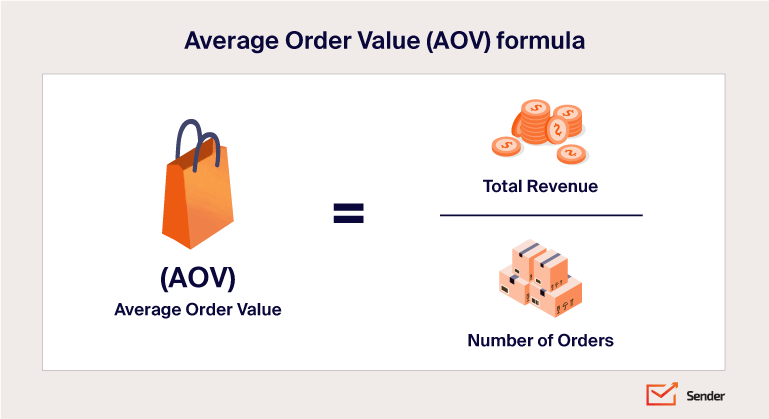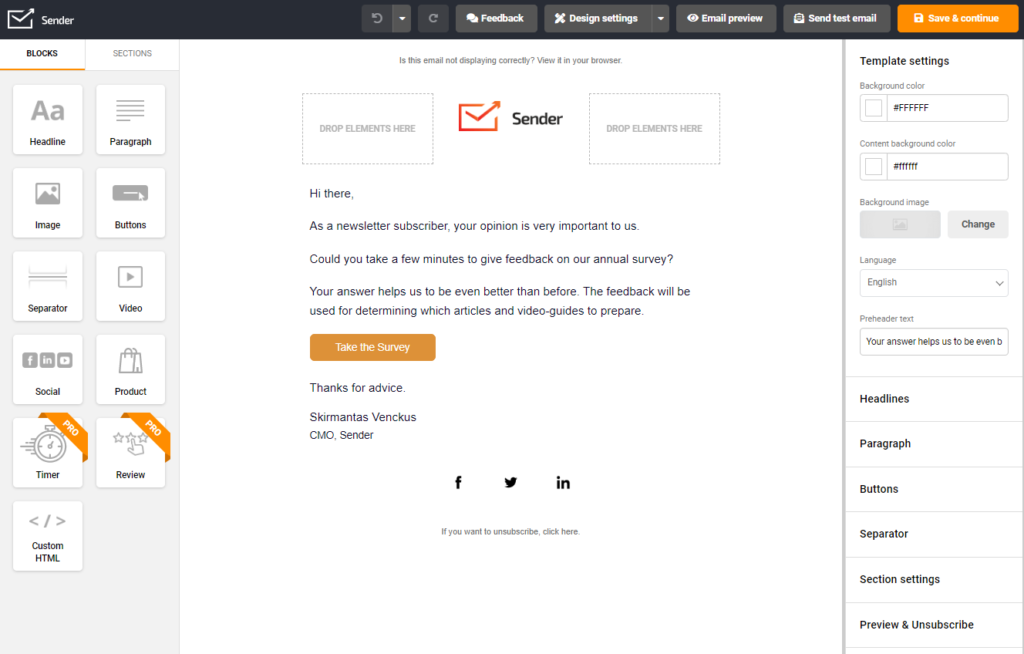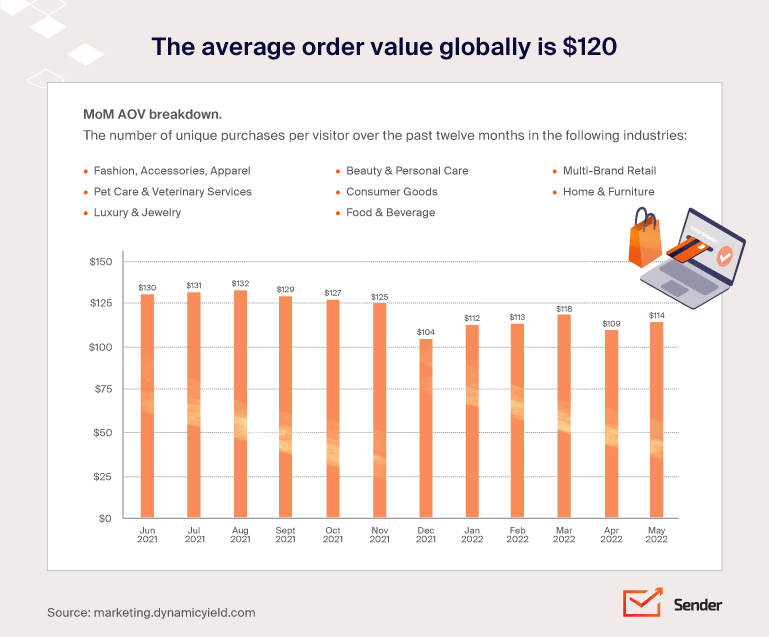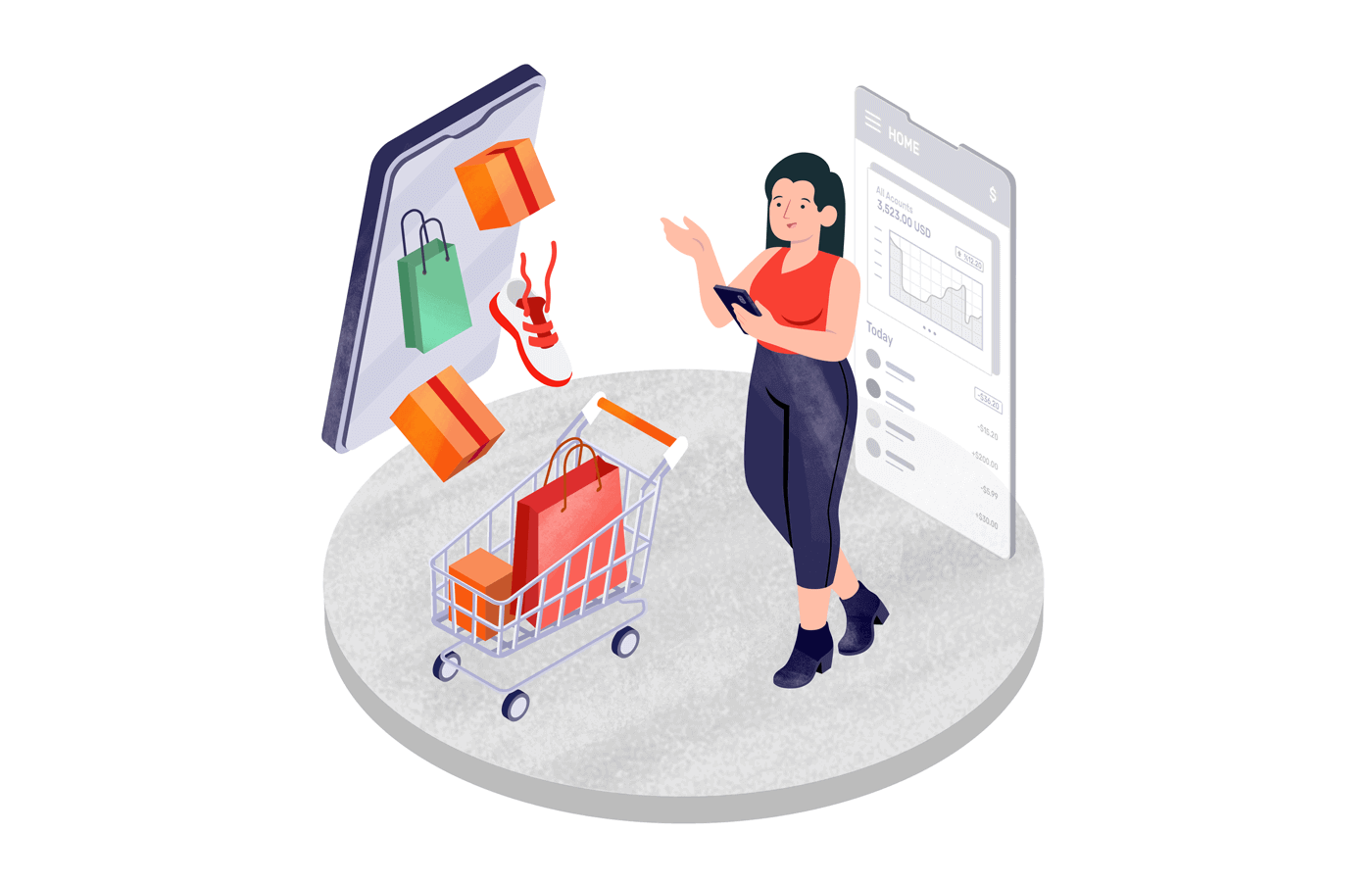Average Order Value (AOV) is a crucial performance statistic used by online retailers to better understand their consumers’ purchasing behavior.
Every eCommerce business strives to increase the average order value.
Below, we’ll discuss how to learn about AOV and how to increase your AOV, which may result in greater profit than just more income.
What is Average Order Value?
Average Order Value is defined as an eCommerce indicator that calculates the average sum of all orders placed with a merchant during a specific period. The average order value also reveals which price points are the most popular across all of your products. Make use of this data to better manage your inventory and develop a pricing plan for high-value purchases.
AOV impacts the company’s critical business choices, such as product price and marketing, hence, it has to be closely managed. Due to eCommerce’s dynamic and competitive market, businesses should assess their AOV daily or weekly.
Why is AOV important?
Your AOV is a crucial metric for determining customer behavior. By analyzing what it is and which goods are purchased the most, you can find out the best strategies to boost your AOV that make sense for your consumer base.
Simply put, the greater your average order value, the more revenue you may generate from the same number of customers, which implies you may raise income without also raising marketing and sales costs. AOV optimization is another tool that marketers may use to expand their business.
Knowing your business’s average order value aids in the valuation of your total marketing campaigns and pricing strategies. You can combine order management software which provides the metrics required to calculate the long-term worth of individual consumers.
AOV Formula
The average order value is computed by dividing revenue by the number of orders placed. Like other essential indicators, it may be measured over any period of time, although most businesses focus on the moving monthly average.
AOV is calculated using sales per order rather than sales per client. Although a consumer may return to make repeated purchases, each order is considered by AOV independently.
Calculations

AOV should be tracked as carefully as any other company measure, preferably on a daily or weekly basis. Even if there are any dips or peaks, every part of the business should be scrutinized to see what caused the pattern. New ads, buying seasons, visual changes to a website, and other shifts are all conceivable causes that might influence AOV swings.
How to Improve Average Order Value
The main advantage of boosting average order value is that each transaction earns you more money. As a result, your store will be more profitable. There are a variety of methods for increasing average order value that will entice clients without being intrusive. Here are 8 strategies to try out and see what works best for you.
Order Minimum for Free Shipping
Free delivery is a frequent yet extremely successful approach to entice clients to spend more money. Providing a free shipping threshold might be used in place of discounts.
Merchants who sell things online must carefully consider how to design a free shipping policy that meets their needs. A free shipping threshold is an effective strategy for reducing delivery expenses and increasing gross profits for your company.
If you opt to provide free shipping with a minimum order quantity, make sure to promote it on your website’s homepage, product pages, and at checkout.
Create Product Bundles
Product bundling is a marketing strategy that involves grouping numerous products together and selling them as a single unit for a single price. Customers are encouraged to buy additional things with this method.
When you bundle things, you increase the perceived value of a customer’s purchase. Offering a package of items that creates an all-in-one option for the desired experience is an excellent method of product bundling.
If you want people to buy more goods, create product bundles that are less expensive than buying the same items separately. This allows clients to receive all the information they need in one place, minimizing the need for additional research and reducing their spending.
Upsell
Upselling is the process of persuading consumers to buy more costly things or add upgrades or add-ons to their existing purchases. Upselling is a tactic for increasing revenue from each order.
Your upsell should look helpful and sincere, as if it were a recommendation from a friend. For example, when a customer attempts to purchase Amazon’s standard plan, they recommend the professional plan instead for more benefits, and the price goes up.
If a business is concerned that offering complementary goods would affect conversion rates, a low-risk option to test is to use post-purchase upsells. You can utilize data to determine which things individuals buy together in this way. Then create a pre-purchase package for the same.
Also read: Best Upselling Techniques (6 Tips with Examples)
Cross-sell
Cross-selling refers to a vendor encouraging customers to acquire additional valuation or related items to the one they are purchasing. The method improves the seller’s revenue per order, similar to upselling.
Display or discuss complementary items to your customers whenever feasible to increase sales. This may be as simple as stated in your product descriptions that some items complement each other. Make it apparent in your message and shop design that your things are more valuable when purchased in combination with other items.
Loyalty Program
Loyalty programs may help business and customer loyalty growth. According to research conducted by professors, loyalty programs improve the average order value by approximately 14%. They not only encourage individuals to add extra to their orders, but also aid in client retention.
Customers might be rewarded with points or incentives. Users may utilize their points to gain discounts, free things, rewards, or insider access in return for their points. The idea is to encourage repeat purchases and foster customer-business trust.
Flexible Return Policy
It’s critical to be as clear and adaptable with your consumers as possible. Creating a liberal return policy can relieve any concerns or reservations potential consumers may have about purchasing from you.
It’s critical to properly show your return policy to your customers after you’ve set it. Your purchase confirmation messages, social media profiles, advertising and website banners are the most typical places to include a return policy.
Try Higher Service Tiers
Customers should be able to try higher tiers or extra services so that they will be more willing to purchase those higher-priced services later. When a consumer can genuinely use and rely on a service, it becomes much more difficult for them to abandon it at the conclusion of the trial period.
You may design marketing campaigns to target that population with meaningful messaging and items. Customers are more inclined to spend higher amounts of money if your marketing is more focused and particular.
Trust Social Proof
When it comes to digital e-commerce, there’s a clear correlation between client trust and the amount of money they’re prepared to spend on your site. As a result, increasing brand trust and authority is among the most indirect methods to increase AOV.
Customer testimonials and social media comments are instances of social proof, and they may have a significant effect on purchase decisions. If your goods have received positive feedback, be sure to prominently display them on your store’s web pages and marketing content to tempt and reassure buyers.
What if you have a tool that let’s you not only send automated emails to receive feedback but also gives you the superpowers to compose and send SMS marketing campaigns inside the same interface and much more? Sender is here to help!

AOV Marketing in eCommerce
You might be wondering why AOV is so important for ecommerce when you hear so much about it. What makes calculating AOV so important?
Important eCommerce Metrics & KPIs
Any quantitative, regularly specified measurement of website quality is referred to as a metric. eCommerce conversion rate, average order value (AOV), cart abandonment rate, and traffic sources are all examples of key ecommerce data.
While all metrics have importance, KPIs are especially crucial to follow because they are the figures that you use to measure growth. While website visits may be important, your KPI might be the orders themselves.
AOV is a key metric that can help you better understand your consumers’ purchasing habits and market to them. Your typical order amount is roughly $30, for example. This implies that your clients prefer to buy your products at the low end of the price spectrum. It is a signal that you need to modify your marketing efforts in order to encourage people to buy more. As a result, keeping track of your AOV might help you boost revenue significantly.
AOV by Industry

Some Observed Trends
Luxury & Jewelry: The AOV dropped by 63 percent from $220 in April to $115 in May.
Consumer Goods: The AOV increased by 14% from $106 in April to $122 in May.
Multi-Brand Retail: from $147 in April to $168 in May, the average order value increased by 13%.
Home & Furniture: from $43 in April to $51 in May, the average order value increased by 17%.
If your company falls into one of the aforementioned industries (which it must), you can use their numbers to evaluate your marketing and sales efforts.
If your AOV isn’t very high and you start paying attention to the data, you’ll notice lost opportunities to persuade your clients to add more goods to their basket or upgrade to a more expensive version in exchange for more features.
Implement A/B Testing
Obtaining new clients is costly. According to some estimates, getting a new customer costs five times as much as keeping an old one. This is why it’s more cost-effective in the long run to look into options that encourage existing consumers to spend more on each order.
A/B testing gives you invaluable information about what works and what doesn’t. This method enables merchants to answer critical business issues, evaluate the success of ecommerce marketing efforts, and adjust them to attract more visitors. Then it can increase revenue from existing traffic, conversions, and average order value.
You need to A/B test new approaches to entice your existing clients to add more to their shopping cart to keep your AOV continuously high. You can use the top 10% of your clients to test AOV boosting tactics because they spend three times more than the rest of your customer group.
Improve Your Average Order Value
Now that we’ve established what AOV is and why optimizing AOV is a solid investment for marketers, let’s move on to the next step. Put the expert advice above to use, and your average order value and income will skyrocket in a short time.
Also read:





